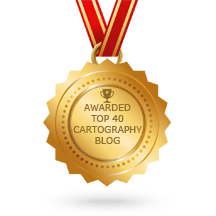The Green Book was a travel guide for African Americans published 1936 and 1966. The prevalent racism of the era necessitated a guide directing travelers to places they would be welcome. The New York Public Library (NYPL) Labs created an online tool where you can plan a trip from and to anywhere in the country using this resource. For example, here is a 1947 trip to Miami to Los Angeles.
You can choose a trip using the 1947 or 1956 edition of the book. Notice the (literal) lengths taken to avoid almost all of Texas. A click on the hotels and restaurants will take you to the corresponding page in the scanned book.
Curious about the avoiding Texas phenomenon I plotted some other routes that normally go through Texas (using the 1947 book). Here, a trip from Philadelphia to El Paso not only takes special pains to avoid Texas but also appears to be recommending avoiding El Paso completely and going to Tucson instead.
A New Orleans to Tucson trip follows almost the same route, veering way north in order to avoid Texas. Even traveling to central Texas using the 1947 book results in some obvious Texas avoidance. Here is Cleveland to San Antonio.
Using the 1956 book routes still avoid much of Texas but not as strenuously. The 1956 book has a much higher number of listings so that is probably the main reason for this though conditions for travelers may have also improved over this time period in Texas.
Plan your own trip here or view all of the green book data on a map here.
You can choose a trip using the 1947 or 1956 edition of the book. Notice the (literal) lengths taken to avoid almost all of Texas. A click on the hotels and restaurants will take you to the corresponding page in the scanned book.
Curious about the avoiding Texas phenomenon I plotted some other routes that normally go through Texas (using the 1947 book). Here, a trip from Philadelphia to El Paso not only takes special pains to avoid Texas but also appears to be recommending avoiding El Paso completely and going to Tucson instead.
Using the 1956 book routes still avoid much of Texas but not as strenuously. The 1956 book has a much higher number of listings so that is probably the main reason for this though conditions for travelers may have also improved over this time period in Texas.
Plan your own trip here or view all of the green book data on a map here.













